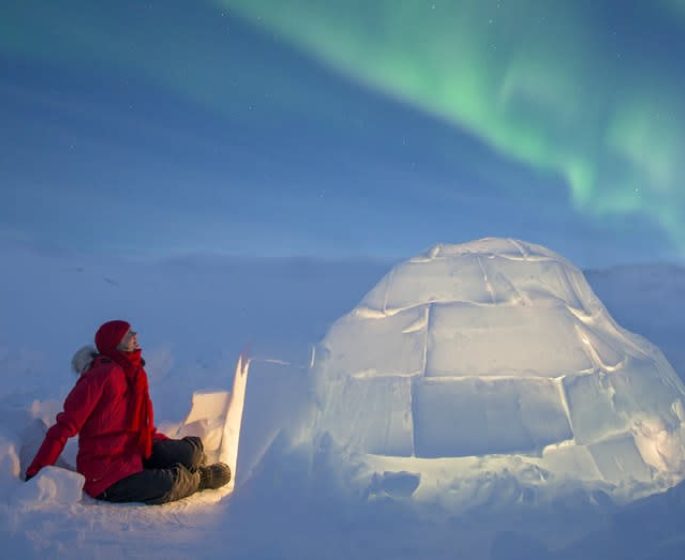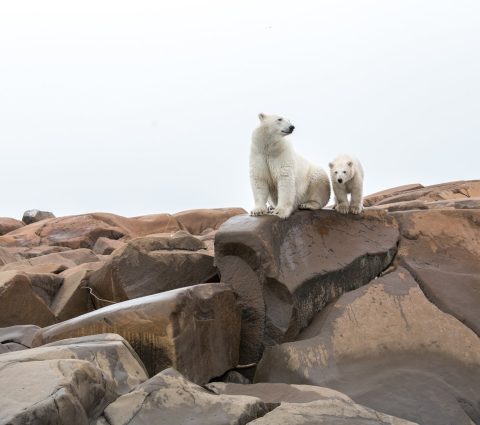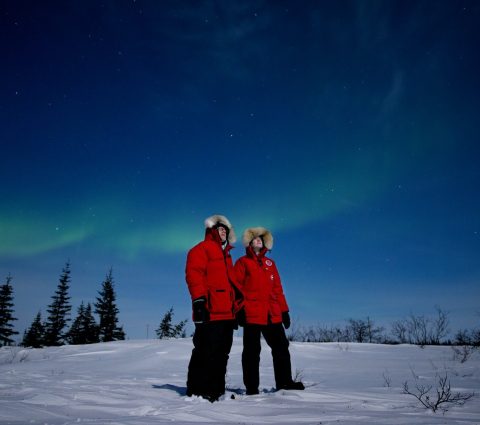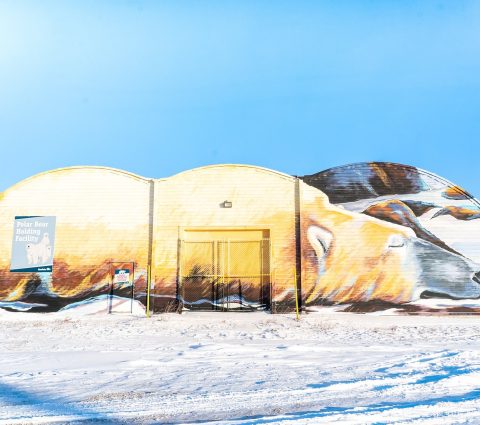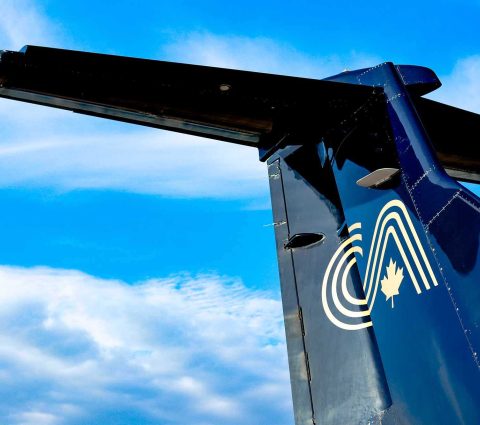
Pre-Dorset to Modern Inuit
The first people to set foot on what is now Churchill and the surrounding area did so thousands of years ago. It is believed that the Churchill area was a seasonal hunting ground for hundreds of years. Artifacts such as tent rings and kayak stands from Pre-Dorset, Dorset or Inuit peoples have been found in the area.
The Pre-Dorset culture (1700 B.C.) lived a semi-nomadic lifestyle in the Churchill area, hunting caribou in the summer and ringed seal in the winter. They were followed around 600 B.C. by the Dorset people, members of the “Arctic Small Tool Tradition”. The Thule culture, which displaced the Dorset people around 1000 A.D., are the ancestors of today’s Inuit. Long before Europeans arrived, the Cree, Dene and Inuit had well-established trading networks.
Fur Trade & Exploration
Henry Hudson was the first European to explore the Bay – he did so in the early 17th century. Danish explorer Jens Munck arrived a decade later in search of a northern passage to the Orient – his expedition came ashore near the mouth of the Churchill River and named the area “New Dane’s Land”. Almost all of his crew died as a result of disease and exposure. Munck and his couple surviving crewmen were able to sail home in 1620.
Famously established in 1670, The Hudson’s Bay Co. is the oldest commercial corporation in the world. Originally named The Governor and Company of Adventurers of England trading into Hudson’s Bay, its headquarters were at York Factory, some 250 kilometres southeast of what is today the town of Churchill. From here, the Company controlled much of the fur trade for decades.
In 1717, Fort Churchill was established at the mouth of the Churchill River, and Fort Prince of Wales followed in 1731. The fort took fourty years to build, and was overtaken by three French warships in 1782 – without a shot ever being fired. The Hudson Bay Co. reclaimed control over Fort Prince of Wales the next year, but by that time it was in disrepair and the fur trade was already in decline.
Churchill was the home of Canada’s first astronomical observations, made in 1769, and was also the point of departure for Samuel Hearne’s overland journey to the Arctic Ocean.
Modern Times
Churchill has become Canada’s only Arctic seaport, and ocean trade came to the town in the early 20th century. Grain was the focus most trade, and one the Hudson Bay Railroad was completed in 1929, the first shipment of grain took place in 1931. In the late 1990s the port was sold by the Government of Canada to American company Omni TRAX. The port still operates today, with shipments coming and going from mid-July until early November. Fuel, building materials and other goods for communities further north than Churchill also come through the port.
Fort Churchill was built established in 1942, and was located around ten kilometres east of Churchill, near the original Fort Churchill; it was established by the United States Air Force as part of the Crimson Route, a proposed overseas route to support the Allied forces in Europe. It became a training and experimental centre after World War II, and was subsequently closed in 1980.
In 1957, the Churchill Rocket Research Range was established; over 3000 sounding rockets were launched in conjunction with experiments relating to northern lights and the ionosphere. The base was decommissioned in the mid-1960s, and is now home to the Churchill Northern Studies Centre.
Get Inspired with our #ExploreMB Blog!
A Churchill calendar: When to see what
Churchill, an isolated town in Manitoba’s north along the Hudson Bay coastline, is a magnet for outdoor adventurers and nature lovers. Experiencing Churchill’s natural wonder triumvirate – kayaking with belugas, chasing the Northern Lights and seeing...
Explore Churchill
Welcome to Churchill, Canada
Known as the polar bear capital of the world, Churchill is also known as a beluga whale watching hotspot and one of the best places to see the northern lights.
Plan Your Trip
Start planning your trip to see beluga whales, polar bears or the northern lights!
About Churchill, Canada
Learn about the history of Churchill and its surroundings, from the Pre-Dorset to Modern Inuit cultures through to the european fur trade and exploration of the North.
Calm Air
Experience The North

